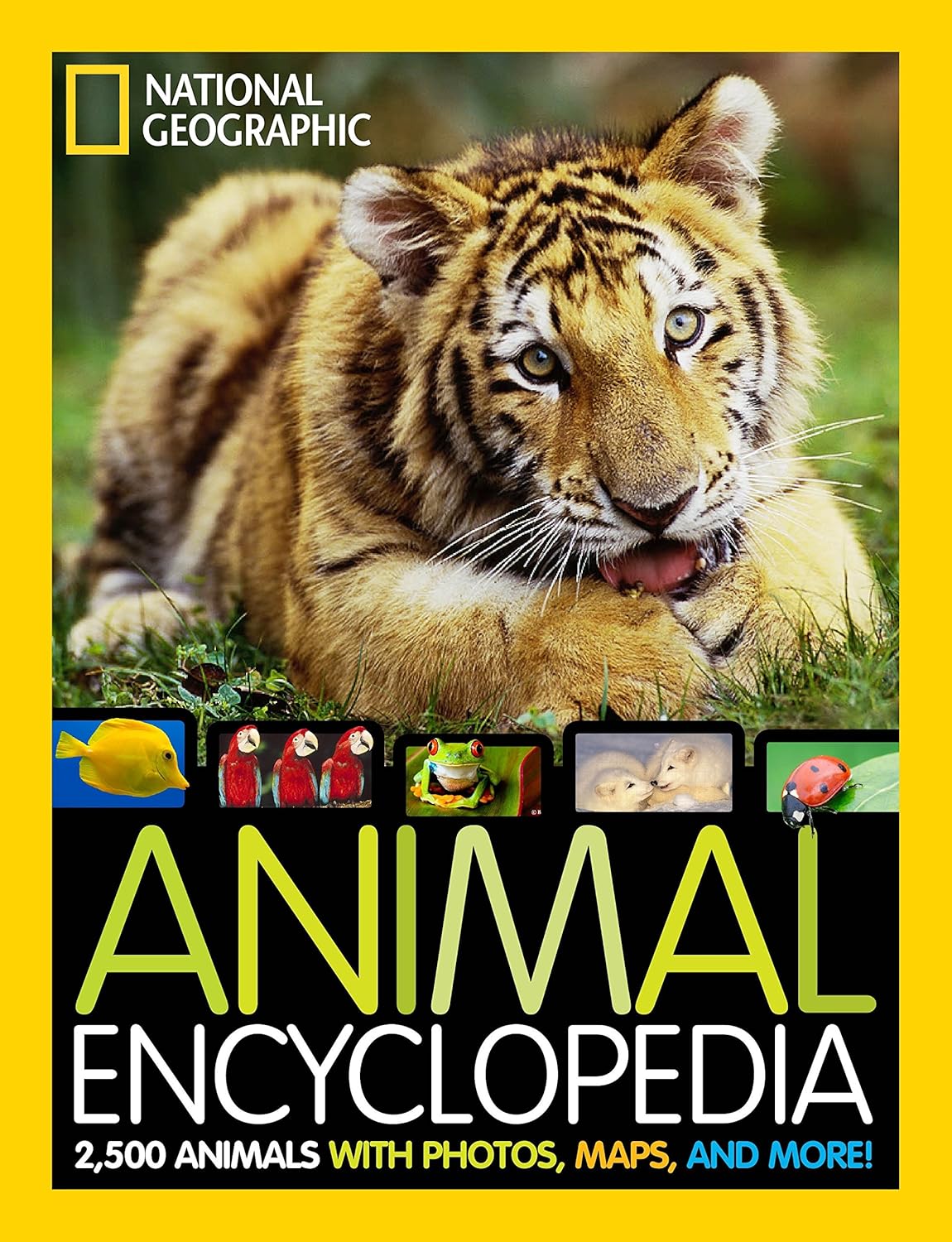
National Geographic Animal Encyclopedia: 2,500 Animals with Photos, Maps, and More! (National Geographic Kids)
FREE Shipping
National Geographic Animal Encyclopedia: 2,500 Animals with Photos, Maps, and More! (National Geographic Kids)
- Brand: Unbranded

Description
Access-restricted-item true Addeddate 2021-04-17 14:00:37 Associated-names National Geographic Society (U.S.) Boxid IA40089307 Camera Sony Alpha-A6300 (Control) Collection_set printdisabled External-identifier Discover the thousands of animals that call Earth home in this new edition of National Geographic's best-selling Animal Encyclopedia. Lccn 2012023783 Ocr tesseract 5.0.0-alpha-20201231-10-g1236 Ocr_detected_lang en Ocr_detected_lang_conf 1.0000 Ocr_detected_script Latin Ocr_detected_script_conf 0.9368 Ocr_module_version 0.0.13 Ocr_parameters -l eng Old_pallet IA18960 Openlibrary_edition Deforestation has greatly altered landscapes around the world. About 2,000 years ago, 80 percent of Western Europe was forested; today the figure is 34 percent. In North America, about half of the forests in the eastern part of the continent were cut down from the 1600s to the 1870s for timber and agriculture. China has lost great expanses of its forests over the past 4,000 years and now just over 20 percent of it is forested. Much of Earth’s farmland was once forests. Deforestation is the purposeful clearing of forested land. Throughout history and into modern times, forests have been razed to make space for agriculture and animal grazing, and to obtain wood for fuel, manufacturing, and construction.
Deforestation - National Geographic Society Deforestation - National Geographic Society
Over generations, all of the species that are currently alive today have evolved unique traits that make them distinct from other species. These differences are what scientists use to tell one species from another. Organisms that have evolved to be so different from one another that they can no longer reproduce with each other are considered different species. All organisms that can reproduce with each other fall into one species. Some areas in the world, such as areas of Mexico, South Africa, Brazil, the southwestern United States, and Madagascar, have more biodiversity than others. Areas with extremely high levels of biodiversity are called hotspots. Endemicspecies—species that are only found in one particular location—are also found in hotspots. Biodiversity is a term used to describe the enormous variety of life on Earth. It can be used more specifically to refer to all of the species in one region or ecosystem. Bio diversity refers to every living thing, including plants, bacteria, animals, and humans. Scientists have estimated that there are around 8.7 million species of plants and animals in existence. However, only around 1.2 million species have been identified and described so far, most of which are insects. This means that millions of other organisms remain a complete mystery. Today, the greatest amount of deforestation is occurring in tropical rainforests, aided by extensive road construction into regions that were once almost inaccessible. Building or upgrading roads into forests makes them more accessible for exploitation. Slash-and-burn agriculture is a big contributor to deforestation in the tropics. With this agricultural method, farmers burn large swaths of forest, allowing the ash to fertilize the land for crops. The land is only fertile for a few years, however, after which the farmers move on to repeat the process elsewhere. Tropical forests are also cleared to make way for logging, cattle ranching, and oil palm and rubber tree plantations. urn:lcp:animalencycloped0000unse:epub:eb4a271b-c6fb-44ce-96da-768b79496427 Foldoutcount 0 Identifier animalencycloped0000unse Identifier-ark ark:/13960/t20d5jv1p Invoice 1652 Isbn 9781426310225
The next great Dog Man adventure from the worldwide bestselling author and artist Dav Pilkey. You'll howl with laughter! Scientists are interested in how much biodiversity there is on a global scale, given that there is still so much biodiversity to discover. They also study how many species exist in single ecosystems, such as a forest, grassland, tundra, or lake. A single grassland can contain a wide range of species, from beetles to snakes to antelopes. Ecosystems that host the most biodiversity tend to have ideal environmental conditions for plant growth, like the warm and wet climate of tropical regions. Ecosystems can also contain species too small to see with the naked eye. Looking at samples of soil or water through a microscope reveals a whole world of bacteria and other tiny organisms. Deforestation also threatens the world’s biodiversity. Tropical forests are home to great numbers of animal and plant species. When forests are logged or burned, it can drive many of those species into extinction. Some scientists say we are already in the midst of a mass-extinction episode.
National Geographic Animal Encyclopedia: 2,500 Animals with National Geographic Animal Encyclopedia: 2,500 Animals with
More immediately, the loss of trees from a forest can leave soil more prone to erosion. This causes the remaining plants to become more vulnerable to fire as the forest shifts from being a closed, moist environment to an open, dry one.
- Fruugo ID: 258392218-563234582
- EAN: 764486781913
-
Sold by: Fruugo
